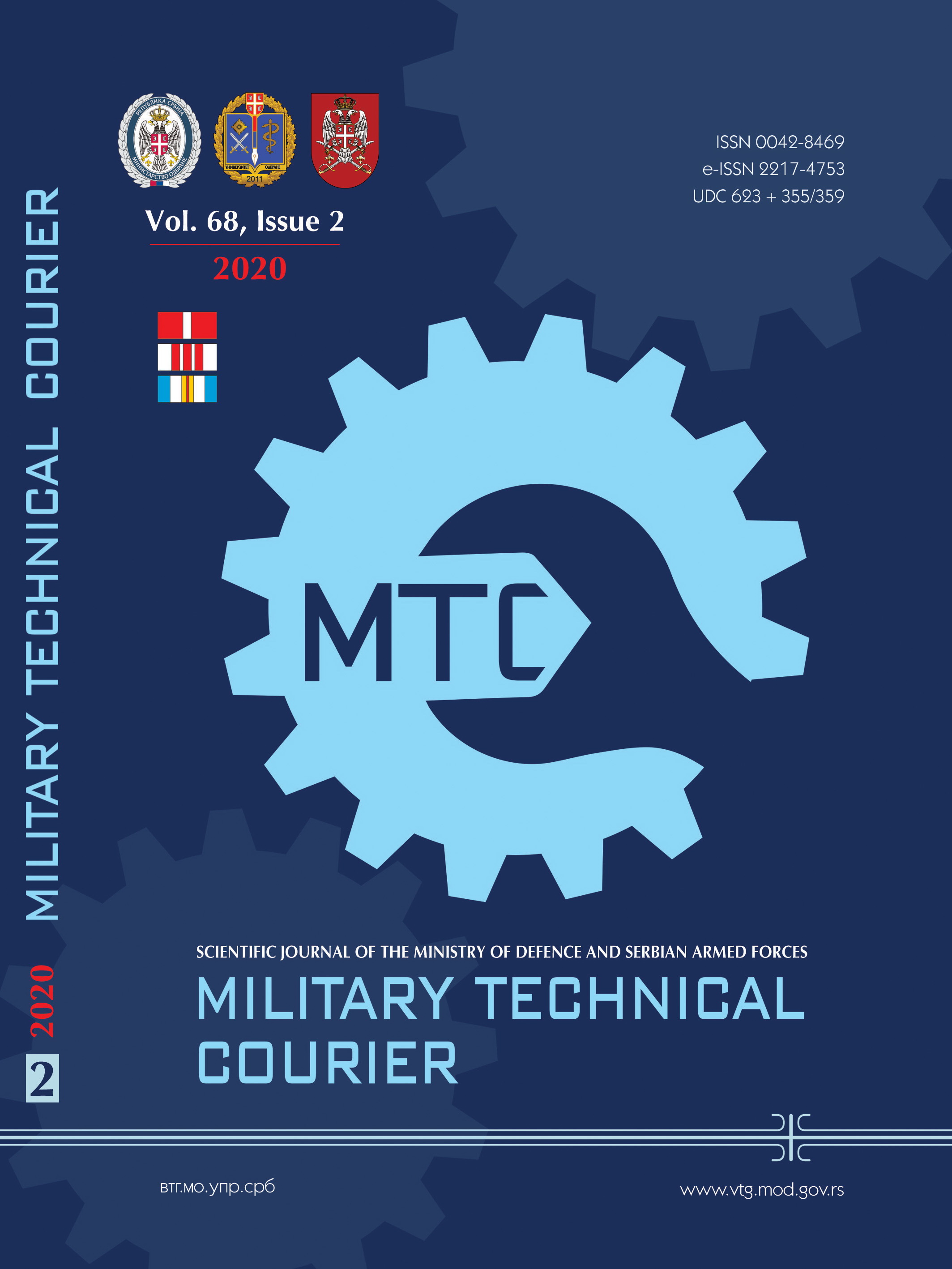Radiation exposure of the Army of the FR Yugoslavia in Kosovo and Metohia during the NATO aggression of 1999
Abstract
Introduction/purpose: The paper indicates the radiation doses the military personnel of the Federal Republic of Yugoslavia were exposed to, and in particular the military personnel of the motorized brigades in the territory of Kosovo and Metohia on the Albanian-Yugoslav border.
Methods: Gammaspectrometry measurements have confirmed that round penetrators contained depleted uranium, and the presence of alpha, beta and gamma radiation was determined by the method of dosimetric measurement.
Results: The use of ammunition with 238U depleted uranium, with added plutonium, pollutes the environment, water, and soil in the long term, causing various disorders and diseases, primarily malignant ones. The radioactivity of 239Pu, compared to its toxicity, is several thousand times higher and the inhalation of plutonium dust is harmful and causes cancer. Uranium is a pyrophoric metal, toxic, radioactive and easy to ignite. Its oxides are toxic and partially soluble in water. After ignition, the round releases radioactive aerosol particles which burn in contact with the air causing short or long term damage wheninhaled. In Kosovo and Metohia, a large amount of radioactivity was measured during the NATO aggression against the FR Yugoslavia. In Metohia, radioactivity was 1,100 times that of natural background radiation.
Conclusion: During the war, the Army of the FR Yugoslavia was exposed to high radioactive doses, so that among the members of the army after the war there was an increased incidence of various malignancies, many of them lethal.
References
Accame, F. 2006. Uranio impoverito. La verità. Rome, Italy: Malatempora (in Italian). ISBN 8884250366.
Ajdačić, V. & Jakšić, P. 2001. Search for the truth about the NATO use of depleted uranium in the war against Yugoslavia - truth under the DU carpet. In: ENRY2001-International Conference on Environmental Recovery of Yugoslavia, Belgrade, pp.338-342. September 27-30 [online]. Available at: https://inis.iaea.org/collection/NCLCollectionStore/_Public/34/047/34047646.pdf?r=1&r=1 [Accessed: 15 March 2020].
Anđelković-Lukić, M. 2015a. Darovi milosrdnog anđela - Ekološko razmatranje rata NATO protiv SR Jugoslavije, 2. dopunjeno izdanje. Novi Sad: Balkanija (in Serbian).
Anđelković-Lukić, M. 2015b. Chemical, Radiological and Environmental Impacts of NATO’s War of Aggression against Yugoslavia. In: 19thInternacional Scientific Eco-Conference, Novi Sad, Serbia, pp.39-50, 23-25 September.
David, D. 1999. Kosovo: de vraies et de fausses leçons stratégiques. Revue Défense Nationale, 615(Decembre), pp.39-43 (in French) [online]. Available at: https://www.defnat.com/e-RDN/vue-article.php?carticle=7517 [Accessed: 15 March 2020].
Delić, B. 2019. NATO je na Srbiju bacio 20 puta više uranijuma nego što priznaje. Novi standard, 30 July [online]. Available at: https://www.standard.rs/2019/07/30/delic-nato-je-na-srbiju-bacio-20-puta-vise-uranijuma-nego-sto-priznaje/ (in Serbian) [Accessed: 15March 2020].
Đurović, S., & Petrušić, J. 2016. Zašto ćutiš Srbijo. Belgrade: Svesrpski otadžbinski tabor (in Serbian).
Đurović, B., Spasić-Jokić, V., Petković, S., Fortuna, D., Selaković-Mićunović, V., & Atlagić, N. 2011. Osiromašeni uranijum – metode detekcije, saniranje neposrednih efekata i prevencija kasnih posledica. Belgrade: doc. dr Branka Đurović (private publisher - personal edition).
Jovanović, V., Petković, S., & Čikarić, S. 2012. Zločin u ratu - genocid u miru: posledice NATO bombardovanja Srbije 1999. godine. Belgrade: Službeni glasnik (in Serbian).
Ocić, Č. 2019. Katastrofalne posledice zapadne politike prema Kosovu i Metohiji. Koreni, 27 May [online]. Available at: http://www.koreni.rs/katastrofalne-posledice-zapadne-politike-prema-kosovu-i-metohiji/ (in Serbian) [Accessed: 15 March 2020].
Tagliazucchi, M.,& Leggiero, D. 2019. Militari all'uranio. Per la prima volta i retroscena svelati da testimonianze, documentazioni e foto. Serrungarina, Pesaro Urbino, Italy: David and Matthaus (in Italian).
Vukmirović, Z. 2019. Osiromašeni uranijum je zabranjen u Belgiji 2009. godine. Politika, 20 April [online]. Available at: http://www.politika.rs/scc/clanak/427470/Pogledi/Osiromaseni-uranijum-je-zabranjen-u-Belgiji-2009-godine (in Serbian) [Accessed: 15 March 2020].
Proposed Creative Commons Copyright Notices
Proposed Policy for Military Technical Courier (Journals That Offer Open Access)
Authors who publish with this journal agree to the following terms:
Authors retain copyright and grant the journal right of first publication with the work simultaneously licensed under a Creative Commons Attribution License that allows others to share the work with an acknowledgement of the work's authorship and initial publication in this journal.
- Authors are able to enter into separate, additional contractual arrangements for the non-exclusive distribution of the journal's published version of the work (e.g., post it to an institutional repository or publish it in a book), with an acknowledgement of its initial publication in this journal.
- Authors are permitted and encouraged to post their work online (e.g., in institutional repositories or on their website) prior to and during the submission process, as it can lead to productive exchanges, as well as earlier and greater citation of published work (See The Effect of Open Access).

